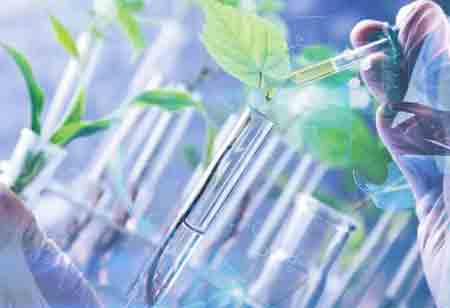Thank you for Subscribing to Agri Business Review Weekly Brief
Exploring the Frontiers of Agricultural Biotechnology: Innovations for Global Challenges
Agricultural biotechnology is a field that uses genetic engineering, molecular breeding, and genome editing to enhance agricultural productivity

By
Agri Business Review | Tuesday, July 23, 2024
Stay ahead of the industry with exclusive feature stories on the top companies, expert insights and the latest news delivered straight to your inbox. Subscribe today.
Agricultural biotechnology is a potent tool for tackling global agricultural issues through scientific innovation and technological advancements.
FREMONT, CA: Agricultural biotechnology is a field that uses genetic engineering, molecular breeding, and genome editing to enhance agricultural productivity, sustainability, and food security. These methods address global agricultural challenges, contributing to sustainable food production, environmental stewardship, economic development, and biodiversity preservation for future generations. Agricultural biotechnology focuses on improving crops, livestock, and farming processes, achieving desired traits in plants and animals that traditional breeding methods cannot reach.
Fundamental Techniques in Agricultural Biotechnology
Genetic Engineering: Genetic engineering involves manipulating an organism's genetic material to introduce or alter specific traits. In agriculture, this technique enhances crop resistance to pests and diseases, improves tolerance to environmental stresses (such as drought or salinity), and increases nutrient content or yield. Genetically modified (GM) crops, such as insect-resistant Bt cotton and herbicide-tolerant soybeans, exemplify the application of genetic engineering in agriculture.
Marker-Assisted Selection (MAS): MAS is a molecular breeding technique that identifies and selects plants or animals with desired traits based on genetic markers. These markers are linked to genes responsible for traits like disease resistance, yield potential, and nutritional quality. MAS accelerates breeding by enabling breeders to select superior individuals without extensive phenotypic evaluation.
Genome Editing: The ability to precisely modify an organism's DNA has transformed agricultural biotechnology through genome editing tools like CRISPR-Cas9. CRISPR-Cas9 allows scientists to edit specific DNA sequences with unprecedented accuracy, offering potential applications in creating disease-resistant crops, improving nutritional profiles, and optimizing plant development traits.
Applications of Agricultural Biotechnology
Crop Improvement: Agricultural biotechnology improves crop features to address global issues like food security and climate change. The environment benefits from GM crops' resistance to diseases and pests, which lowers production costs and eliminates the need for pesticides and herbicides. They can thrive in harsh environments, promoting sustainable agriculture.
Livestock Improvement: Biotechnological advancements have also impacted livestock breeding and management. Genetic manipulation, artificial insemination, and embryo transfer increase animal productivity, health, and disease resistance. Biotechnology in livestock production aims to enhance meat and dairy quality, increase reproductive efficiency, and develop disease-resistant breeds.
Biological Control: Agricultural biotechnology promotes using biological control agents, such as beneficial insects or microbial pesticides, to manage pests and diseases sustainably. Biocontrol methods reduce reliance on chemical pesticides, minimize environmental pollution, and preserve beneficial organisms within agroecosystems.
Scientific and Ethical Considerations
While agricultural biotechnology offers promising solutions to enhance farm productivity and sustainability, it raises scientific and ethical considerations. Key considerations include:
Safety: Rigorous scientific evaluation ensures the safety of biotechnological products for human consumption, animal health, and environmental impact.
Regulatory Oversight: Biotechnological product development, testing, and commercialization are governed by regulatory frameworks to ensure compliance with safety standards and ethical guidelines.
Consumer Perception: Public perception and acceptance of biotech products influence their adoption and market access. Transparent communication about benefits, safety, and regulatory oversight is essential to build consumer confidence.





